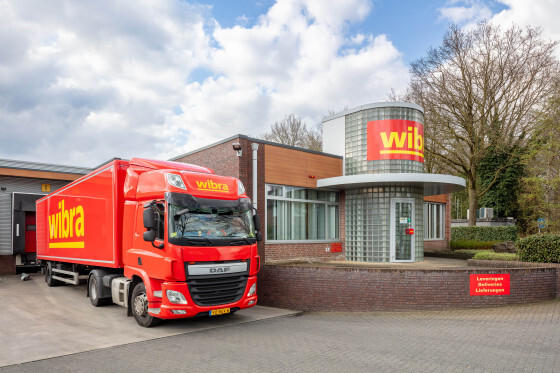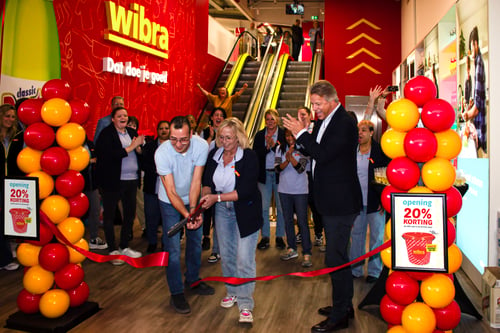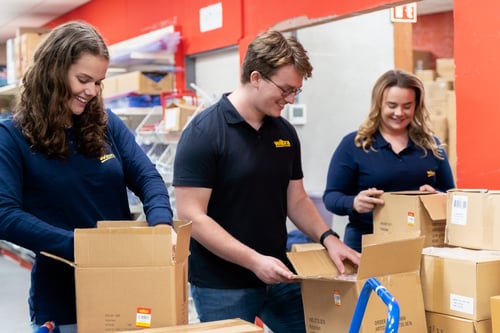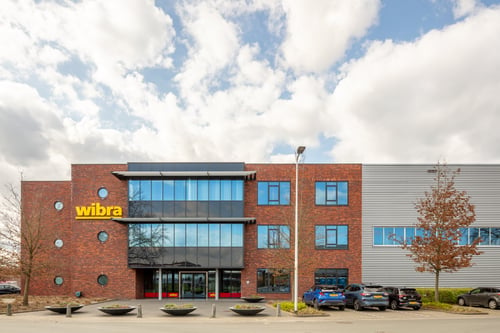Case study
Wibra optimizes logistics planning with More Optimal
Wibra, the fast-growing discount retailer active in the Netherlands, Belgium, and France, faced a complex logistical challenge: efficiently planning transport, docks, and staging lanes amid increasing volumes and complexity. With the More Optimal platform, Wibra found a flexible, scalable solution that not only optimizes transport but also fully integrates with warehouse processes and enables real-time feedback through a driver application. Within just a few months, the collaboration had already led to improved predictability of delivery and return times, shorter lead times, and a more operationally robust organization.
“What I really appreciated was that More Optimal doesn’t think in checkboxes or standard solutions. They immediately acted on our feedback, and that felt like a true partnership. Together, we sought the best solution, not just ticking off deliverables.” – Arthur Böhmer, Supply Chain Manager, Wibra


Transformation
Wibra is a well-known name in discount retail with more than 300 stores in the Netherlands, Belgium, and recently also France. With a competitively priced assortment including household goods, textiles, home decor, and a strong focus on inventory control, Wibra has managed to operate with limited stock levels while rapidly opening new stores. Over the past few years, Wibra has transformed from a traditional discount concept into a modern, efficient, and growing retail formula.
300+
shops
2025
year of implementation
30+
trucks

The Challenge
The search for a new planning system was driven by three main factors. Firstly, rapid growth increased complexity in the logistics operation, while crucial planning knowledge was concentrated with just one employee. Secondly, the existing translation from transport planning to dock and staging planning was inadequate, leading to inefficient use of the expedition hall. Additionally, there was a need for greater predictability of returning trucks to better align warehouse capacity and optimize capacity utilization.

The Search for the Right Solution
Wibra explored the options and supplier landscape for transport planning applications. In the final selection, three providers were compared, including More Optimal. The decisive factor was the unique combination More Optimal offered: powerful transport optimization, TMS functionality for managing drivers, vehicles, and locations, along with direct integration of dock and stretch planning — all from a single platform. The hands-on approach, technical depth demonstrated in the demos, and the confidence that More Optimal would deliver ultimately made the difference.

Implementation and Collaboration
The application was launched live through an iterative six-week process. Wibra is very satisfied with the short communication lines, the sense of partnership, and More Optimal’s ability to quickly address bottlenecks. Both the algorithm and the configuration were actively adjusted based on feedback from the planner. The collaboration is characterized by mutual trust and a solution-oriented approach.
“Wibra positioned itself as a true partner: knowledgeable, with a clear vision, engaged, and open to change. Thanks to this attitude, we were able to develop a strong solution together and go live swiftly.” – Margot Albers and Camiel Mennen, Consultants, More Optimal.

Results and Impact
Although it is still too early for definitive savings figures, the initial results are promising:
- Better predictions of truck return times have shortened the warehouse process (stretch lane occupancy) by 4 hours.
- Production now starts later and better aligns with the available space in the shipping hall.
- Planning has become less dependent on individual staff and is more robust.
- Stores are positive about the increased reliability of delivery information.
- The number of trips, hours, kilometers—and thus CO2 emissions and costs—have been reduced.
Next Steps
In the next phase, the driver app will be integrated into the delivery process, enabling containers to be scanned upon delivery and automatically registered in the inventory system. Further refinement of the algorithm and optimization of parameters such as break times and unloading times are also underway.
Why Wibra Chooses More Optimal
More Optimal’s strength lies in its flexible low-code platform, logistics expertise, and commitment during and after implementation. For Wibra, this is the ideal combination to support its growth strategy logistically and achieve scalable efficiency.

